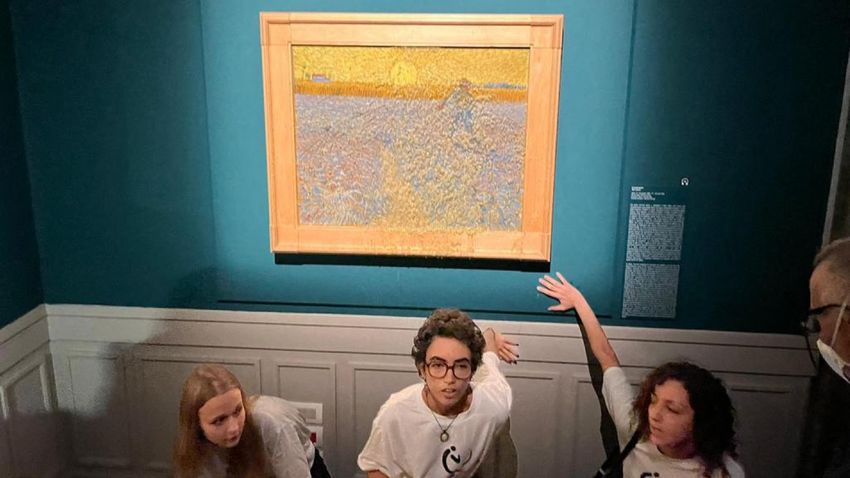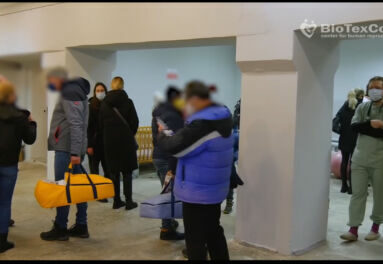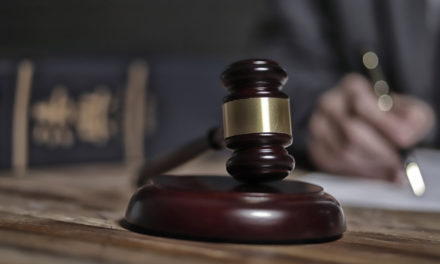It has been in the news several times that climate activists - usually no longer living - have poured over the works of art of artists and creators with paint, different dyes or liquids, for example even tomato soup, as happened with Vincent van Gogh's painting Sunflowers, which was protected by glass. Or activists who are radical in the spirit of cancel culture, typically also belonging to the political left, toppled statues if they believed that the historical person who is the subject of the work of art had done or said something that they thought was hurtful or unacceptable. And in mid-November, members of the environmental activist group Utolsó Nemzedék poured oil on Gustav Klimt's Life and Death, kept in the Leopold Museum in Vienna, and one of them glued himself to the glass panel protecting the painting. The painting was reportedly not damaged.
In connection with the case, Stefan Berger, the cultural spokesman of the Austrian Freedom Party (FPÖ), a radical right-wing force with a significant (one-sixth and one-quarter) mandate in both the lower house and the upper house of the Austrian federal legislature, called it necessary to formulate a new security concept, which can be used to adequately protect the images. , sculptures and historical artefacts, as he put it: all museum exhibits.
Therefore, the FPÖ proposed in the federal lower house that the terms "climate terrorism" and, in this connection, "extremism" should also be included in the text of the report on the protection of the constitution.
Regarding the relevant regulations, in Austria there is a federal law on the protection of monuments due to their historical, artistic or other cultural significance. This is a law that was last amended in 2013. Groups of immovable objects (groups) and collections of movable objects can form a whole due to their connected relationship, including their location, and therefore, according to the law, their preservation as a unit may be of public interest due to this relationship. Preservation is in the public interest if the monument represents, from a supra-regional or regional (i.e. local) point of view, such cultural assets, the loss of which would impair the inventory of Austrian cultural assets as a whole.
Due to the commission of a crime, a specific punishment is therefore possible in the event that someone ignores the legal objectives of monument protection, although this may vary from province to province. In practice, this could mean the imposition of a fine of up to sixty thousand euros in our western neighbor.
Cultural heritage itself, as a conceptual set, includes many works, including architectural, archaeological and artistic monuments. This includes historic buildings, even parts of settlements and settlements, as well as excavation findings, as well as - but not least - the range of material and spiritual works of art, such as paintings, works of art, music, literature and the preservation and protection of cultural and ethnographic traditions. .
Political vandalism is legally sanctioned in the United States. The Visual Artists Rights Act of 1990 (VARA) provides certain rights to artists at the federal level. Perhaps its true significance lies in the fact that VARA can be considered the first federal copyright law to create moral rights protections for creators of works and works of art. With the adoption of the law in 1990, the congress recognized a moral right to the ownership and integrity of the authors of narrowly defined works of visual art that can be enforced through litigation within certain frameworks.
In this context, the right to protection against destruction should be highlighted.
Indeed, it is forbidden to destroy, mutilate, distort or change certain works of art under the scope of VARA in such a way as to undermine the artist's reputation. Even a person who buys such a work for his own collection cannot do so, because by law, this does not give him the right to destroy or change the work of art without the consent of the artist. VARA gives the artist the right to file a lawsuit if his work is destroyed or altered. However, the artist must prove that the destruction of the given work really damaged his reputation, that is, it can influence the widespread opinion of him and his work in a bad way. However, an exception to VARA protection is the stipulation that after this federal law was enacted on December 1, 1990, it does not apply retroactively to works created before that date.
Protection according to VARA is only valid during the artist's lifetime, the heirs cannot exercise the rights provided by the law. This is because the law only protects the reputation of the artist. This regulation is in contrast to the rights provided in the copyright law, which in the United States are valid for seventy years after the death of the owner of the copyright (a subject right that gives the freedom of decision and action that has a significant impact on the stimulation of intellectual creations).
The peculiarity of the overseas legal system is that the laws of some member states of America differ from each other.
Regarding the legal protection of works of art, Florida state law strictly regulates this issue. 806.13 in the codified collection of laws of the member state. On the basis of section no. In Florida, any public vandalism is a felony (misdemeanor). Spray painting other people's property can be considered a form of vandalism, even if the person spraying the paint can thinks it is art or even an important political message to others. This is not the fulfillment of freedom of opinion, but intentional damage to the material and intellectual value of others. If convicted, a misdemeanor charge of disorderly conduct in Florida can result in a second- or first-degree misdemeanor, or even a third-degree felony, depending on the amount of damage to the damaged property.
Penalties for disorderly conduct depend on the amount of monetary damage to someone's property.
For example, they calculate the cost of repainting, using this amount to calculate the actual cost and the penalty that can be imposed. If the damage caused is less than two hundred dollars, then the crime is a second degree misdemeanor, which can mean up to sixty days in jail. If the value of the damage was between two hundred and one thousand dollars, then the tort can be a misdemeanor in the third degree, punishable by up to one year in prison. In the case of property damage worth more than a thousand dollars, in the third degree it is no longer considered a misdemeanor, but a felony, and this can result in up to five years in prison.
The spectacular actions of activists who set themselves up as climate protection activists are also a case of a snake biting its own tail.
After the Second World War, the environmentalists of the UN and its specialized organization, UNESCO, as well as other international organizations, originally supported the enhanced protection of cultural heritage and works of art in general, because they saw in the created beauty, i.e. in works of art as works that convey messages through artistic means of expression also the possibilities of their own represented case. In connection with environmental protection, the works also offered a good chance to increase the social knowledge capital and thus to develop better environmental awareness, and consequently the protection of art and works of art (guaranteed by law in individual states) can play an important and decisive role in ensuring effective environmental sustainability. The mainstream of environmental protection long ago believed that culture and cultural heritage can help to achieve inclusive and sustainable development, thereby protecting the environmental integrity of the planet for the next generation.
However, the vandalism of climate action that destroys works of art tramples the original goals and principles of the movement aimed at preserving the sustainability of the environment, nature, and the human production and consumption system, and not merely the rights of the owners of the given works and creations.
Furthermore, it can even make the political cause of environmental protection unpopular in the eyes of many, and it can also induce social effects that are completely opposite to the initial goals. Critics of cancel culture usually argue that this kind of community life perception and approach has a chilling effect on public discourse, is not productive, and no real social change can be expected from it, rather it causes intolerance in the majority society. And this, together with the toxic effects of climate actionism, can also cause immeasurable mental - and in the longer term, physical and material - damage to humanity.
The author is a constitutional lawyer
Source: Hungarian Nation
Cover image: Pea soup was poured over the painting (Photo: Stringer/ANSA/AFP)












